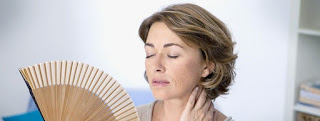Daily foot care
Foot care should take place on a daily basis and thus form part of the daily routine of one's personal hygiene. At least once a day it is good to wash your feet and inspect the entire surface of the epidermis of the foot and toes in order to assess their state of health. Any problems that we may find are usually redness, cracks, swelling, hardening, ingrown nails, cuts, and micro-lesions.
Wash your feet
Your feet need to be washed with warm water and mild soap every day. The temperature of the water is important because if it is too high or too low it can lead to more foot problems than it benefits. The body temperature of 37 degrees is the most suitable value as the temperature of water in which to immerse the feet. Subsequently, the choice of soap is important because it must respect the pH of the body and thus avoid it being too aggressive. There are herbal soaps or you can wash your feet even without soap using only a soft sponge and your hands.
On the epidermis of the foot, there are oily substances that protect the skin and too much washing with the removal of these substances leads to the loss of this protection. Using cotton gloves or a loofah like a loofah are other ways to wash your feet gently and thoroughly. The last step of washing the feet consists of excellent drying because the skin of the foot if it remains damp can be subject to the formation of fungi or infections of various kinds.
The areas between the toes are the most difficult and should be kept clean and dry. Once you have finished washing and drying you can then dress your foot with socks in natural and breathable materials such as cotton. We remind you that it is important to avoid synthetic materials and the dyes of the fabrics must also be as natural as possible. Finally, the shoes must be comfortable and in the shape that best suits our feet. The fit must be of the right size and never too tight.
Sometimes it is good to have shoes for the morning and others for the afternoon as the foot tends to swell with the passage of time and therefore in the afternoon hours the feet need even half an extra shoe size to feel good.
Toenail trimming
The toenails must be cut with extreme care using special scissors with a rounded tip. We could also go to an expert in the field such as a beautician who knows the art of pédicur. However, nails should be cut straight with no corners or irregularities that can cut and scratch. The nail file will therefore be used to smooth the protruding parts and we must remember not to round the shape of the nail downwards and not to cut them too much. Usually the risk of an inaccurate cut is the formation of so-called ingrown toenails resulting in inflammation and pain. A correct cut in the shape of the nail will avoid this problem.
Inspect the entire foot
The feet need to be checked daily for calluses, redness, blisters, or lesions. To do this, a magnifying glass can also be used to better see the smaller parts. For the most hidden areas, it is also good to use a directional light source with sufficient power to better see all parts of the foot.
If during the inspection of your foot you find calluses and calluses, the advice is not to remove them but to ask an expert. Usually, specific patches or insoles are placed that can protect the affected area and help restore the epidermis to normal.
Natural foot care
The foot should usually have the right pH and humidity. However, sometimes the feet are dry and the skin needs to be moisturized with natural plant-based creams. The best ointments are those based on calendula, aloe vera and other emollient plants.
In the evening or in the morning it is good to get into the good habit of applying one of these creams after washing and drying your feet. The skin, thanks to the active ingredients of these plants, will be more elastic and toned over time while the foot will be healthier in general. Of course, foot baths are also great for hydrating and keeping our feet healthy.
The water must have the right temperature, neither too hot nor cold, and we can also add salt and essential oils such as lavender, mint, eucalyptus, orange, thyme, rose, or other essences. Correct hydration is important because it serves to repel fungal attacks and other foot problems.
In case of micro-injuries and irritation, you can use tea tree essential oil to disinfect and aid healing. The arnica-based homeopathic cream with natural antibiotic action is also excellent.



Comments
Post a Comment